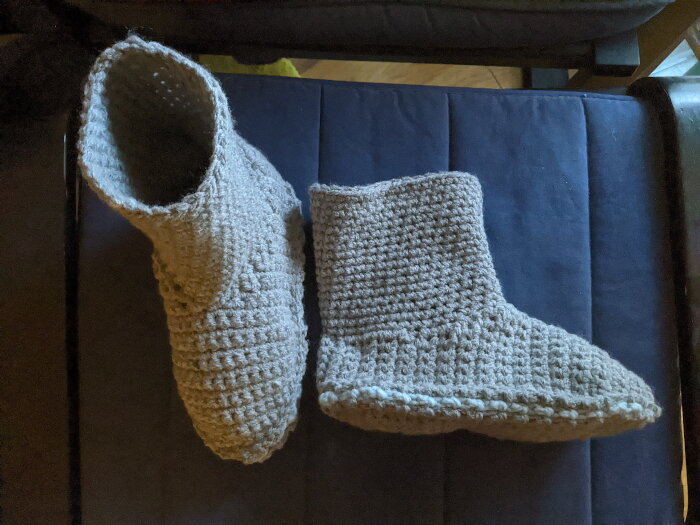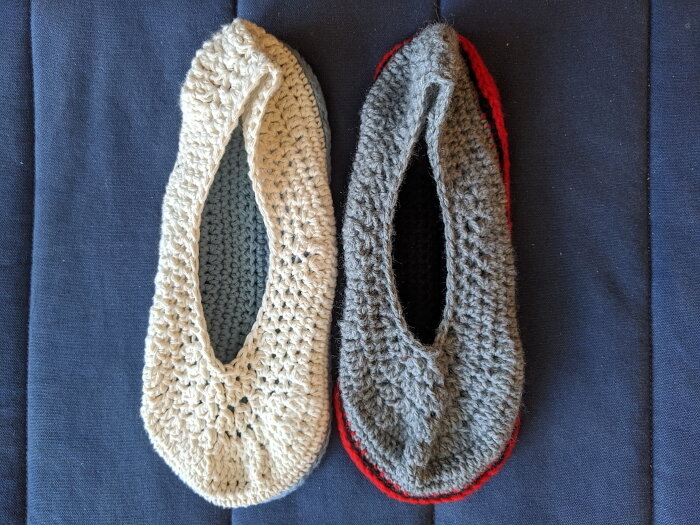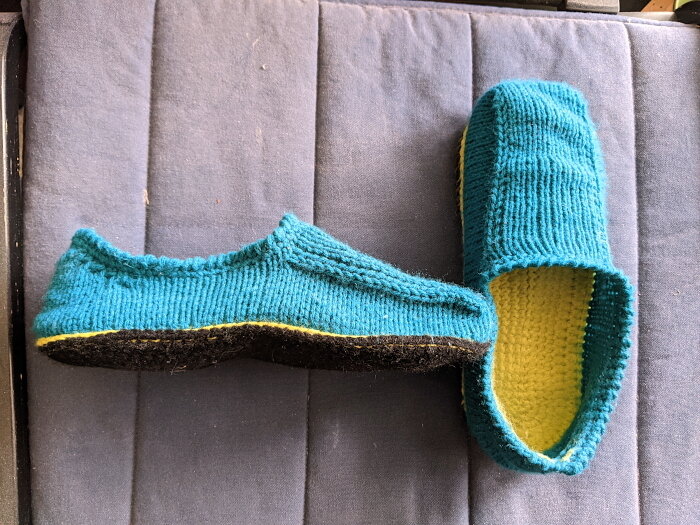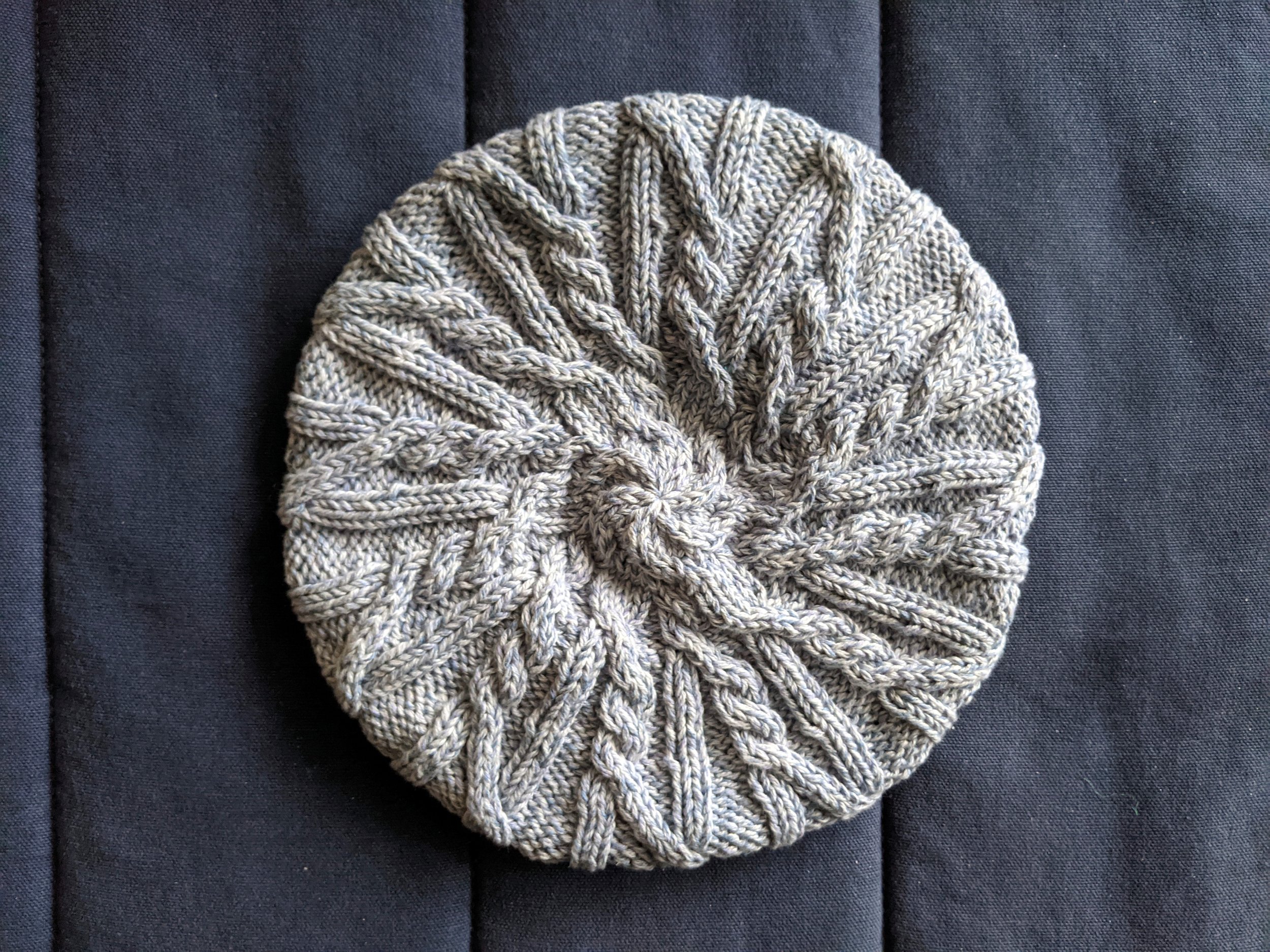
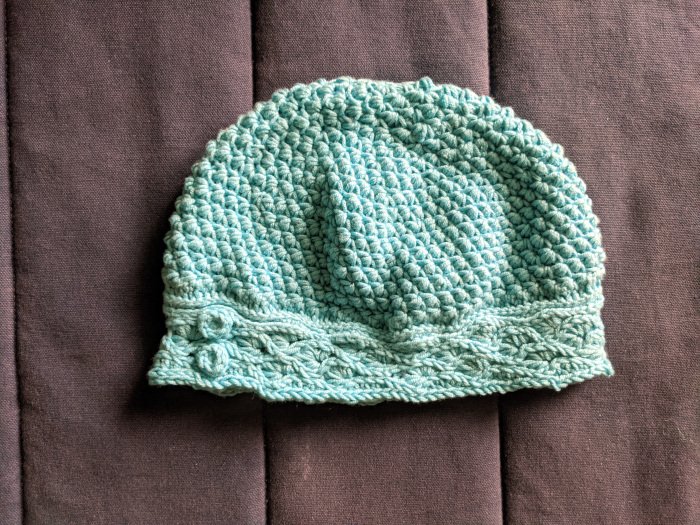
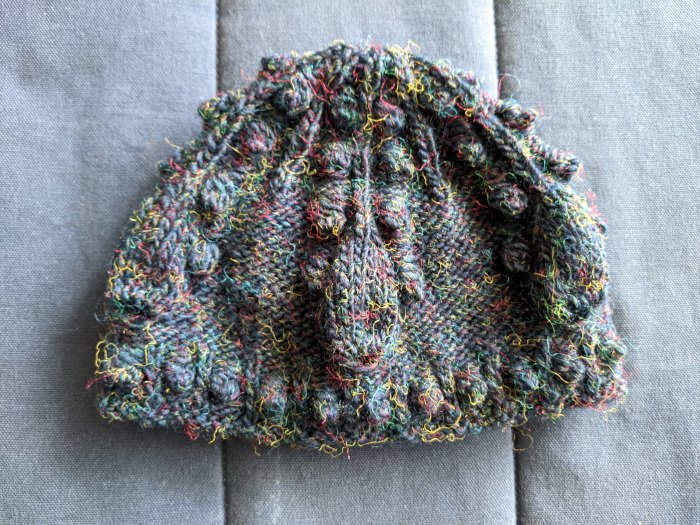
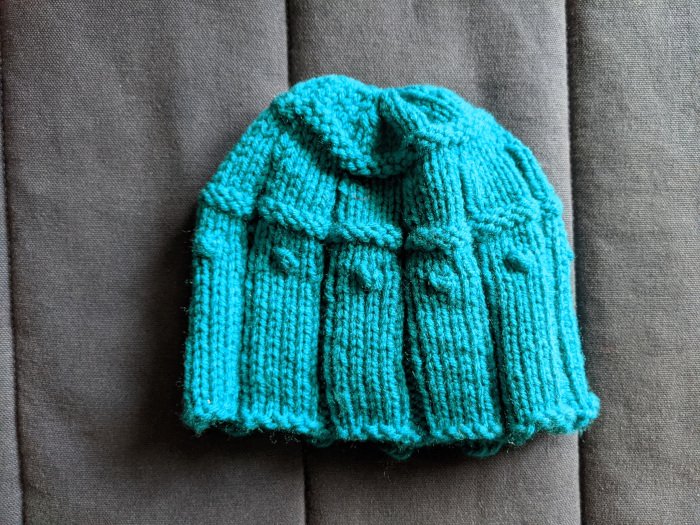
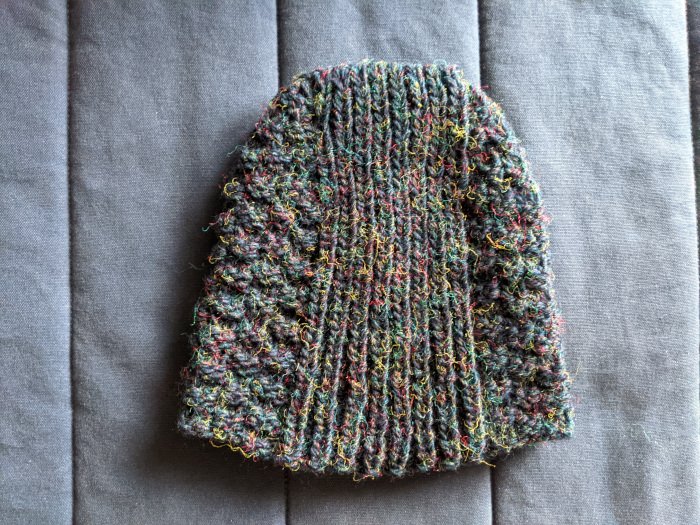
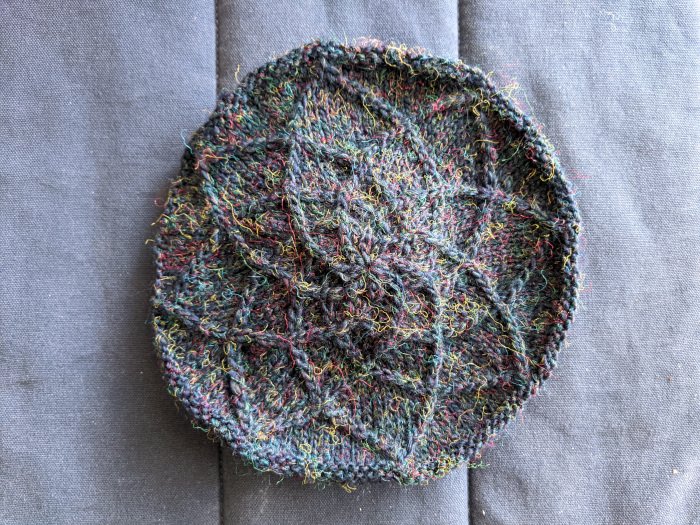
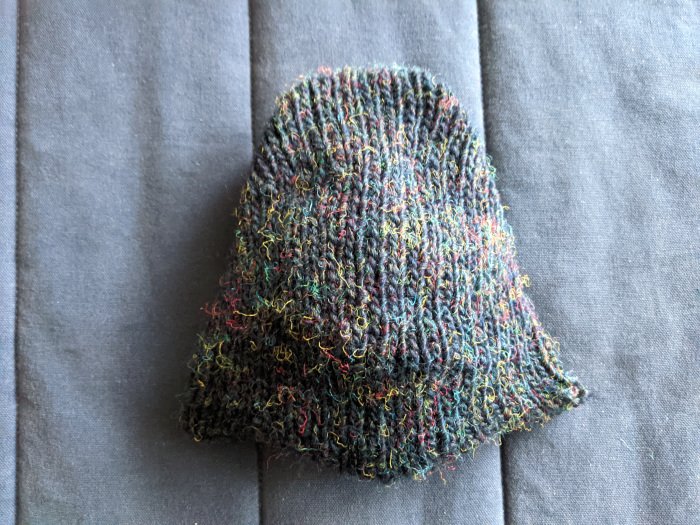
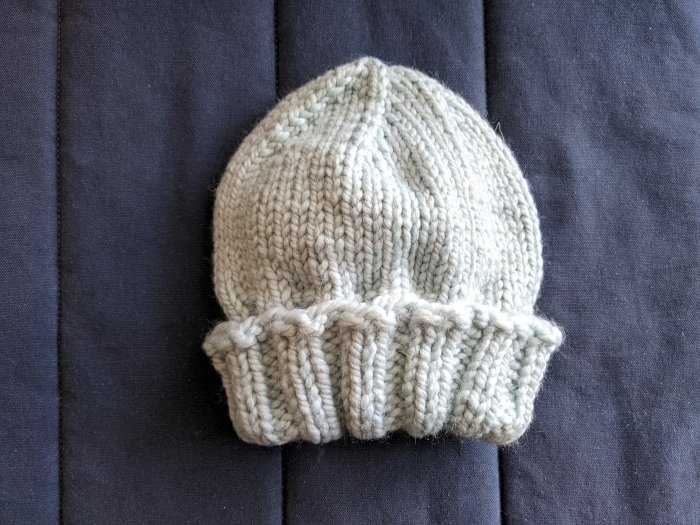
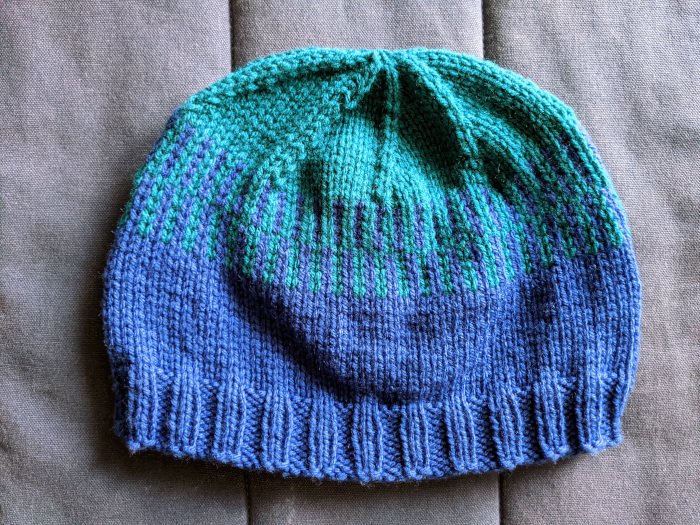
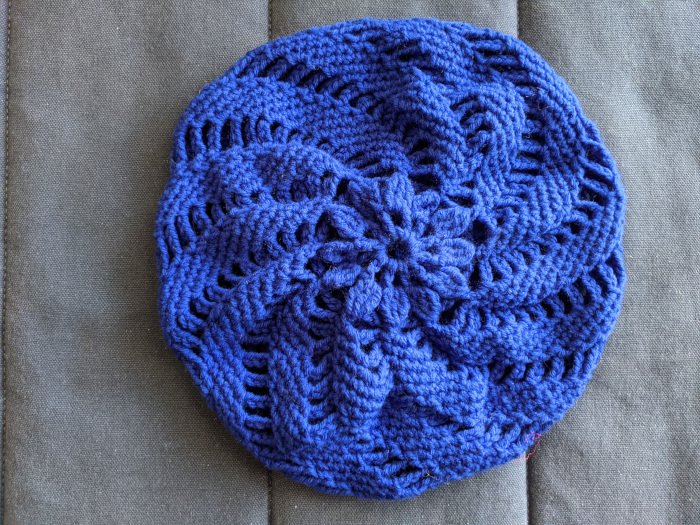
Last summer the ever-generous J-A and I each made a set of hats to donate to Hat not Hate, an American organisation that hands out hats to kids while teaching them how not to bully (and how not to be bullied).
The logical thing to do when making hats for a charity drive is to pick a simple pattern you can make in an evening or less, and then make it over and over, to maximise how many hats your produce.
I find that just doesn’t work for me. I get bored, and then my output slows. Instead, I gathered up all the patterns I thought looked cool, or that I’ve always wanted to try to make but never had a reason to, and matched them up with stash yarn.
The rules for Hat not Hate in terms of yarn is that it can be any colour you like, so long as it’s mostly blue. The blue can be anything from the light icy blue of the toque, to the teal of the rivet hat, to the navy tweeds of the simple hat (the navy tweed was donated by Lynda Tam — thank you!). All of the hats were stash, and it was a lot of fun to match yarn to projects.
Notes on each hat are below.
cabled beret
This is from an old copy of Vogue Knitting. Since it’s supposed to be a summer hat (!), I made it in blue-and-white marled cotton. The cables are integrated into the bottom ribbing, which was fun, as was the tidy finishing of the cables at the centre top of the beret.
crocheted cloche
This was from a recent-ish Interweave Crochet. Honestly? it was a complete pain to make, but I was still glad to make it. The main body stitch was interesting; I could see it being used once upon a time to make a bathing cap in the days before those all switched to latex.
raindrop bobble hat
This is from Norah Gaughan’s Knitting Nature book. It’s very bobbly and otherwise textured, which is unusual these days, but still seemed aesthetically pleasing. I hope the recipient agreed.
rivets hat
This is from one of Elspeth Lavold’s books, The Embraceable You Collection, based on the clothing carved on China’s famous Terracotta Army statues.
simple hat
This version was my sixth or seventh rendering of this pattern. It’s a fun, quick hat to make, and so far everyone I have given one to has talked about how much they like how it looks on them and how well it fits. It also has time travelling abilities, because people have guessed it’s everything from vintage late 60s to vintage 90s (which is mostly correct) to a brand new design. From The Shape of Knitting by Lynn Truss.
sunflower beret
This is another one from the same Norah Gaughan book as above. It went faster, and is not as complicated, than I expected, and the top especially is a very satisfying knit.
tilda reverse flat cap
This is another one from The Shape of Knitting that I’ve made more than once. The brilliance here is that for most of the hat, you’re working short rows around just the top half. It’s basically a slouch hat with all the excess fabric removed, and a much more interesting ending.
toque
I got this pattern from the Lion Brand website when I had finished Cathy’s The Shining Apollo sweater. I made three versions of The Simple Hat (fourth version included here and described above), and then made the Lion Brand pattern as another basic hat friends and family might like.
Nobody wanted it, while the Simple Hats got snapped up with requests for more. My mum has two of them now.
I do think the toque will appeal to someone. Probably someone who is used to only getting hats from major chain stores. It has a certain kind of plainness to it.
two colour beanie
This is the sort of hat that happens when you are trying to use up stash, but don’t have enough for even a hat. I used a basic free beanie pattern found on Ravelry for the base, and then did a very plain stranded colourwork section for the transition to the other colour, rather than just doing an abrupt change. The colourwork hides the beginning-of-round job and makes it a bit less plain.
crocheted lace beret
Of all of the hats, this might be the most “statement” one. I pictured a different imaginary kid as the target recipient for all of these hats, but for this one, I specifically imagined a kid with super-curly, high-volume hair. Of all the hats, this was the one I could see as most likely to be worn all day, not just outside. It’s a big enough beret with big enough openwork that it lies somewhere between a proper beret and a 1940s-style snood.
The pattern comes from Crochet Red: Crocheting for Women’s Heart Health. The pattern was pretty easy to execute once the first few lace rounds were established, and I found the increase/decrease method interesting and fun to do.
The hats all got very carefully stuffed into a padded mailer envelope and shipped off to New Jersey. Since then, Hat Not Hate has changed their hat collection method, and… I don’t know, I like their cause, but supporting a foreign charity just wasn’t as satisfying as the work I’ve done for local/Canadian groups in the past. Since then, I have been making hats and scarves from stash in all sorts of colours, not just blue. Next autumn, when the charities are collecting warm wearables again, I’d like to give them somewhere locally. I always try to make things people will want to wear, so hopefully everything will find owners who are happy to have them, not just because they need a hat and rely on community groups to get them from.

